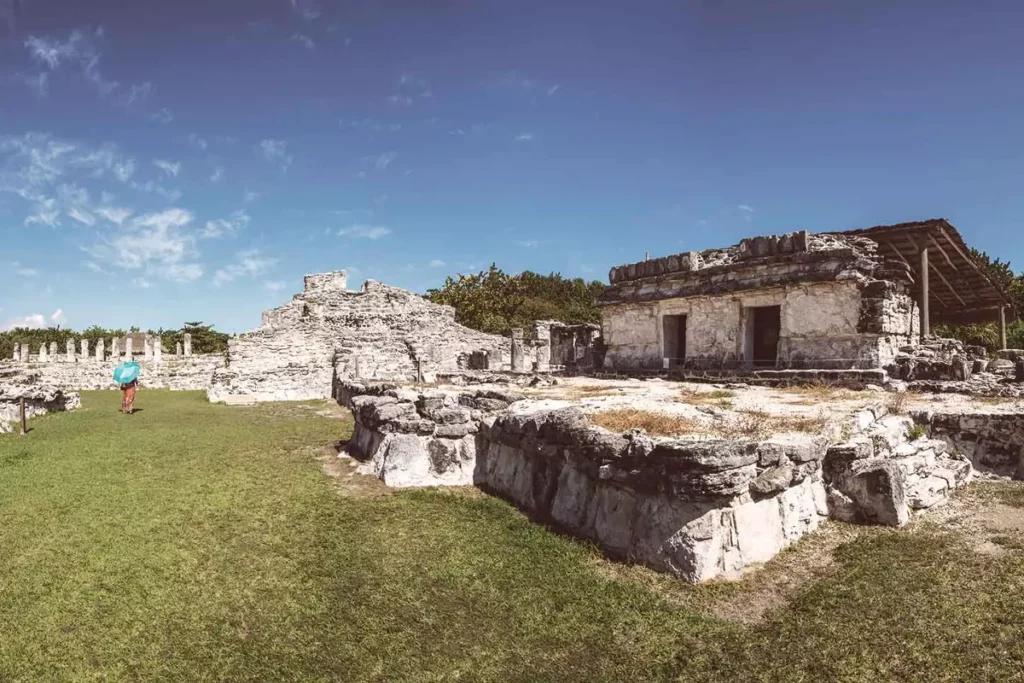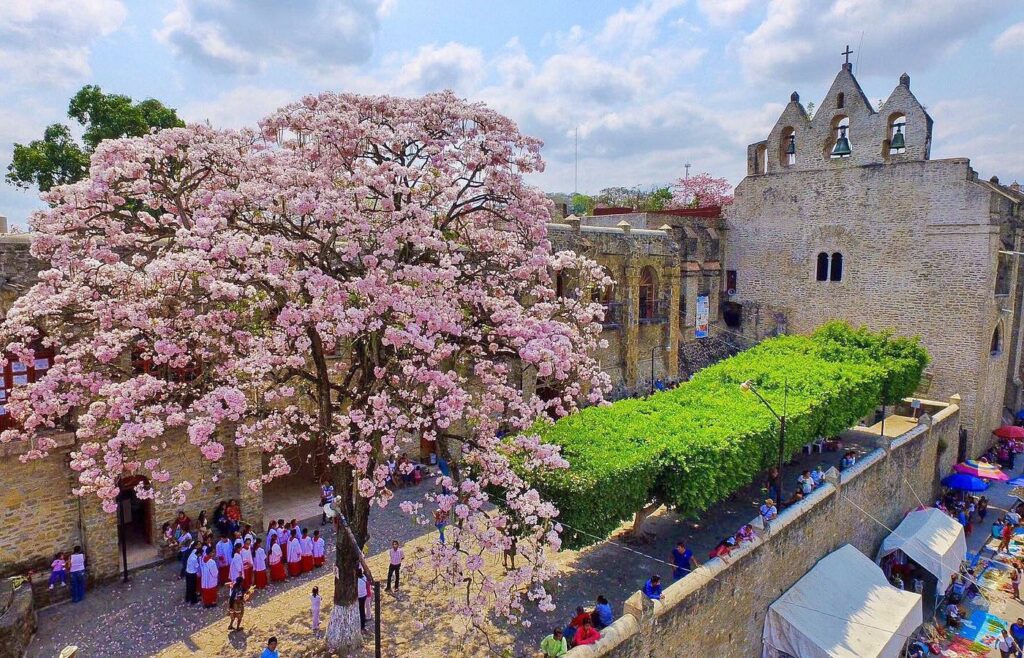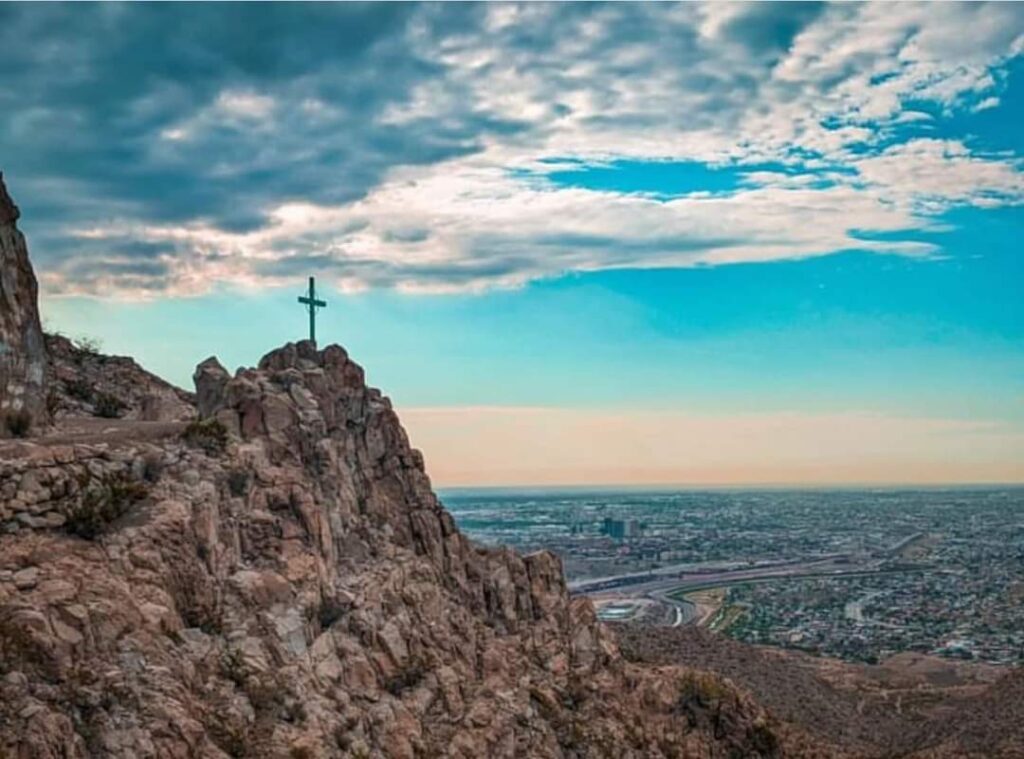El Rey Archaeological Zone, Mexico is nestled within the sprawl of modernity of Cancún lies a secret, a testament to long-lost ancient civilizations that thrived far before the beaches of the city could draw vacationers from the four corners of the globe. What hides within this cement jungle is the Archaeological Zone of El Rey. Walking into El Rey, one abandons the mammoth tourist resorts and the crystalline waters of Cancún to plunge instead into a world where the Maya walked, worked, and worshipped. History breathes here, whispering of an epoch when pyramids kissed the sky, and sacred rituals determined the destinies of kings and commoners alike.

So why bother with El Rey, you ask? Because it’s not just about ruins—it’s what they stand for. It’s about that connecting link to the past that still presides over the present, of a past living in the present design of Mexican life. You walk within the stone paths, among the remains of the civilization long past but somehow familiar. Maybe it was how the sun painted the shadows on the ancient constructions, or maybe how the wind carried the echoes of the chants from that time. One thing is for sure—El Rey will be full of memories that will be etched into your soul.
A Walk Through Time: Historical Significance of El Rey
The Mayans occupied large parts of Mesoamerica and are linked with highly sophisticated cultural practices and enormous architectural works. Although not as well-known as Chichén Itzá or Tulum, El Rey did play an important part in this ancient empire. Founded as a ceremonial and trade centre, El Rey developed into an important whistle at about 200 AD to the post-classic period and became a key node on Maya trade routes. Being on the coast, this particular site was strategic for trading salt, obsidian, and other goods.
But undoubtedly, El Rey had its other mission than that of the marketplace: it had been a spiritual centre where propitiatory rituals and ceremonies for the gods were being held; the faded temples, colourful with murals, at that time – witness to community devotion. El Rey was the seat of a people who didn’t just be; they lived vibrant lives and got to forge a culture that was well integrated with its commerce. Every stone is a tale, and every building has some past within it.
Exploring the El Rey Archaeological Zone Ruins: What Is There To See?
As you make your way into El Rey, the ruins open up before you somewhat like the pages of an open book that has been long-forgotten. Most impressive of all the structures is “The Temple” itself, jutting into the sky, with signs of wear on the steps left by centuries of footfalls. This had been the focus of Maya activities of a religious nature. It is said here the Maya felt linked the earthly with the divine. That very fact, although it stands quiet now, still brings a sense of wonder upon seeing the presence of a temple.
Further away from the temple, there are smaller structures scattered across the land. Former houses and administrative centres tell a little about daily life among the Maya. Stone carvings and faded murals betray references to a time when this site must have been full of hustle. There is a hum full of a thousand years of energy in the atmosphere, and it is easy to envision the ruins again teeming with life: the priests in their rites, the fakirs in their austerities, and the people in their daily occupations in El Rey Archaeological Zone.
What makes El Rey perfect is nothing grand or monumental. The beauty is in the details; within the intricacies of the carvings, within the layout of the buildings, and within the quiet spaces between the stones. You turn a corner, take a step, and something new reveals itself. An experience that is simultaneously humbling and exhilarating opens a window to a world long past.
The Mystical Maya: Religion, Rituals, and Everyday Life
For the Maya, religion encompassed everything, and so was it with El Rey. There were just so many gods and goddesses in the Maya pantheon to properly respect, revere, and sacrifice in nearly equal measure at El Rey Archaeological Zone. At the heart of El Rey, its very centre was a temple: this marked a threshold between the earthly and the divine. Here, priests performed ceremonies to ensure that, among other things, harvests would be bountiful, hunts would be successful, and favour would be found from gods.
But it wasn’t only in the temple that religion resided. These people of El Rey incorporated their beliefs into every particle of their lives. From how they built their houses to the rituals they conducted at birth, marriage, and death, divinity was never too far. This close rapport with the divine would show in the very construction and layout of the city. Buildings aligned to the progression of celestial events and sacral pathways leading to the temple.
They were a pious people, yet practical. For, indeed, life at El Rey bypassed worship in many ways. The marketplace at El Rey was full of families trading goods, working the fields with crops, and making the stoneware, wooden, and metal wares made by gifted artisans. People lived close to the earth, their days organized by the rhythms of the sun and the seasons. Now, in the precincts of El Rey, one can still feel the harmony that existed between the spiritual and the earthly: a balance that gave way to making Maya Civilization so successful through centuries.

From Ancient to Modern: El Rey’s Place in Contemporary Mexico
El Rey today represents a connection between the past and the future. While Cancún has grown into a bustling tourist resort, El Rey’s ruins offer a tranquil respite, a sanctuary for stretching one’s hand out to the more distant past. A giant lofty ruin of grand proportions, it acted as a magnet for the eyes.
None of this has done any damage to El Rey, as preservation efforts have ensured that the site remains in their original state despite encroaching development. The Mexican government has done much to preserve the site from further deterioration from tourism and the elements. Carefully winding paths and information plaques direct visitors around and through the ruins, highlighting the different structures and their history.
But with tourism come challenges. The people who make it possible for the increased revenue in national terms apply pressure on the vulnerable ruins. It is a great struggle to balance accessibility with preservation. However, the importance of the El Rey Archaeological Zone is not only as a ruin for the antiquities portfolio but rather as a living testimony of Mexico’s heritage. The story of El Rey does not close with the visitor into the future.
How to Visit El Rey: The Traveler’s Guide
Are you thinking of paying a visit to El Rey? Here is what you should know. First, go in the early hours of the morning to avoid the fierce sun or late in the afternoon; the site appears to be exposed. Wear comfortable shoes because the paths are rough, and remember to carry enough water. A hat and sunscreen are important too, as the site is quite open.
Allow at least a couple of hours to explore. Small compared with many other Maya sites, El Rey is nonetheless steeped in history and atmosphere. So take your time and soak it in with the surroundings; take time to read the informative plaques that have been fitted in different locations and make an imaginative plunge into life within this city many centuries ago.
Nearby, Cancún offers much other than beaches. Consider combining your visit with a trip to the nearby Museo Maya de Cancún. The museum holds artefacts from the El Rey Archaeological Zone and other regional sites, providing context and depth to your visit. For those interested in exploring further, the ruins of Tulum and Chichén Itzá are also within a few hours’ drive.
Conclusion
The El Rey Archaeological Zone Archaeological Zone is more than merely a pile of tumbled ruins. It speaks of the durability of the Maya civilization, a mini-vista into a world that still captures the imagination. Amidst the stone temples and ancient paths, one feels a people that lived, worshipped, and prospered in harmony with their environment.
In El Rey, the past joins the present to provide something much bigger than simple tourism. It is a trip into the very heart of the ancient heritage of Mexico. It is a place where history breathes life into every stone and shadow. So while you are in Cancún, don’t stop at the beaches. Take a step back in time and uncover the mysteries of El Rey, where it seems the past is never truly far away.
